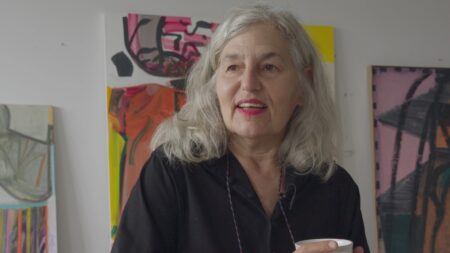Continue playing
(Time remaining: )
Play from beginning
Continue playing "{{ controller.videos[controller.getVideo(controller.currentVideo)].segmentParentTitle}}"
{{controller.videos[controller.getVideo(controller.currentVideo)].title}} has ended.
SecretsPreview
How do artists make the invisible visible? What hidden elements persist in their work? Is it the artist’s role to reveal them, or not?
In this episode, artists share some of the secrets that are intrinsic to their work.
More informationClosed captionsAvailable in English, German, Romanian, Italian, Japanese, Korean, Chinese, Italian
Through the Art21 Translation Project, multilingual audiences from around the globe can contribute translations, making Art21 films more accessible worldwide.
Interested in showing this film in an exhibition or public screening? To license this video please visit Licensing & Reproduction.
More Season 7 Previews
Preview
Preview
Preview
